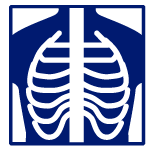Crohn’s & Colitis Glossary

Abscess
A collection of pus (dead white blood cells) formed by an infection.

Absorption
Your body’s process of taking nutrients from the digestive system into the blood so they can be used elsewhere in the body.

Adherence
Taking medication(s) as prescribed by a healthcare professional.

Aminosalicylates
Medications that contain 5-aminosalicylic acid and help reduce inflammation in the lining of the intestine.

Antibiotics
Medications that treat infections and slow down the growth of bacteria.

Antibodies
Cells that fight infections or other substances in your blood/body.

Anus
The very last part of the large intestine where the rectum ends.
Appeal
A request to a health insurance plan to review a decision denying a benefit, service, or payment.

Biologic therapies
Medications made from antibodies of living organisms and/or grown in a laboratory that help to suppress inflammation.

Biomarkers
Molecules in the body, like proteins, lipids, and nucleic acids (DNA, RNA) that may be measured by laboratory tests to assist in diagnosis and management of disease.

